Roboconf
Quick Introduction
Created by Vincent Zurczak / @VincentZurczak
(innocently) Presented by Thomas Morsellino / @TMorsellino
Roboconf In Few Words
- A deployment solution (cloud, but not only)
- Describe Software elements and their relations
- Parallel deployments
- Asynchroneous configuration through AMQP
Simple example: LAMP use case

Initial deployment (+ add a 2nd Tomcat).
Automatic reconfiguration.
How it works: step 1
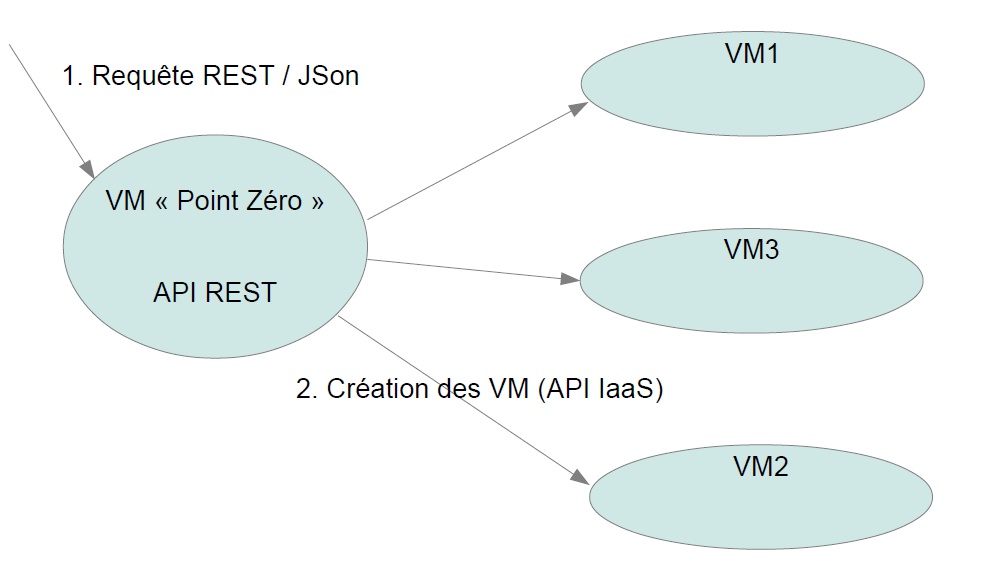
Initial setup: VM « 0 » + Appliance for the agent.
How it works: step 2
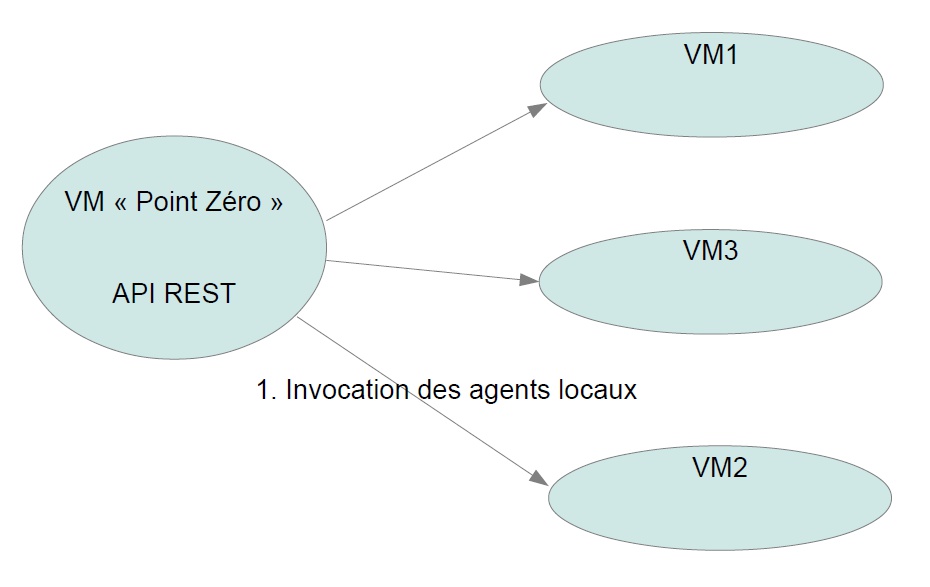
How it works: step 3
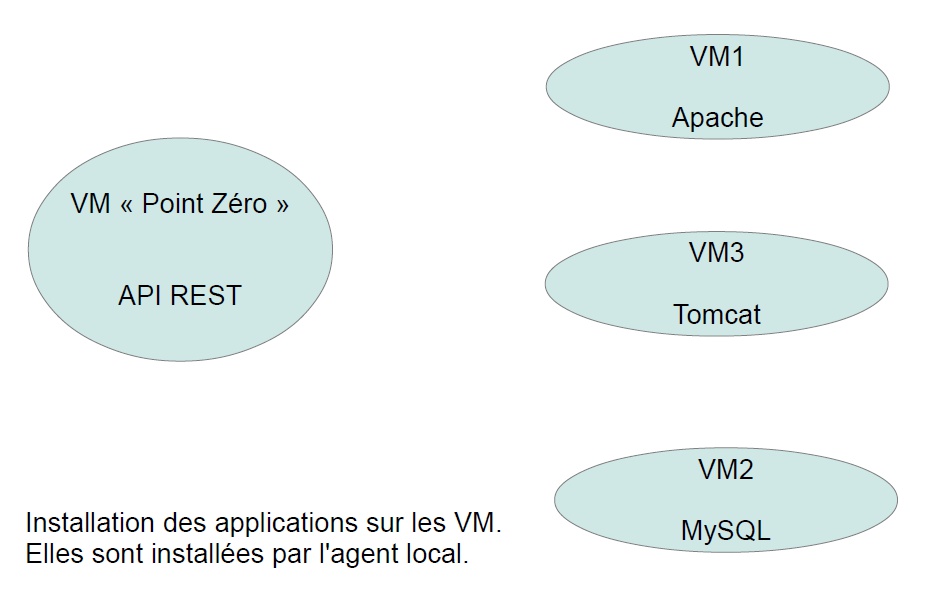
How it works: step 4
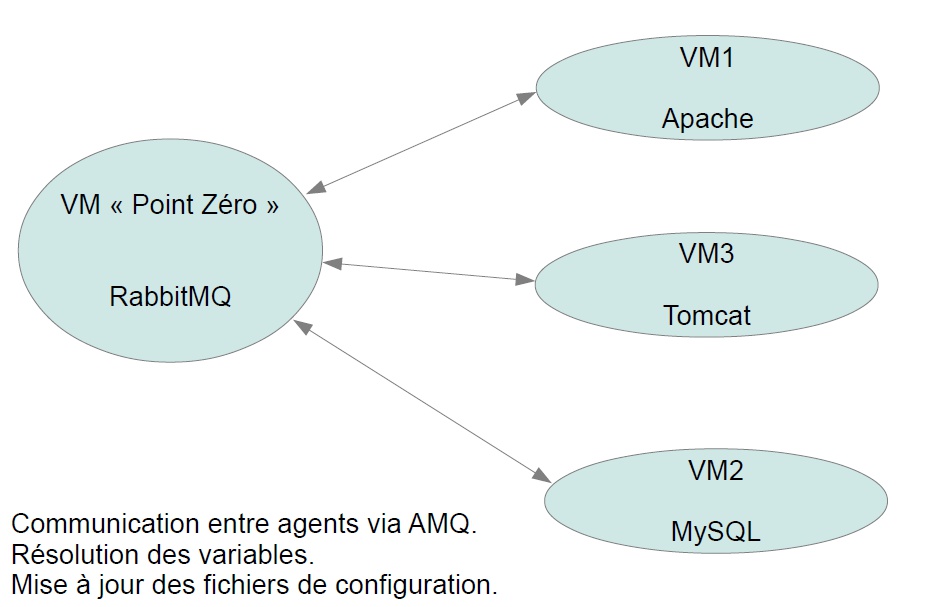
How it works: step 5
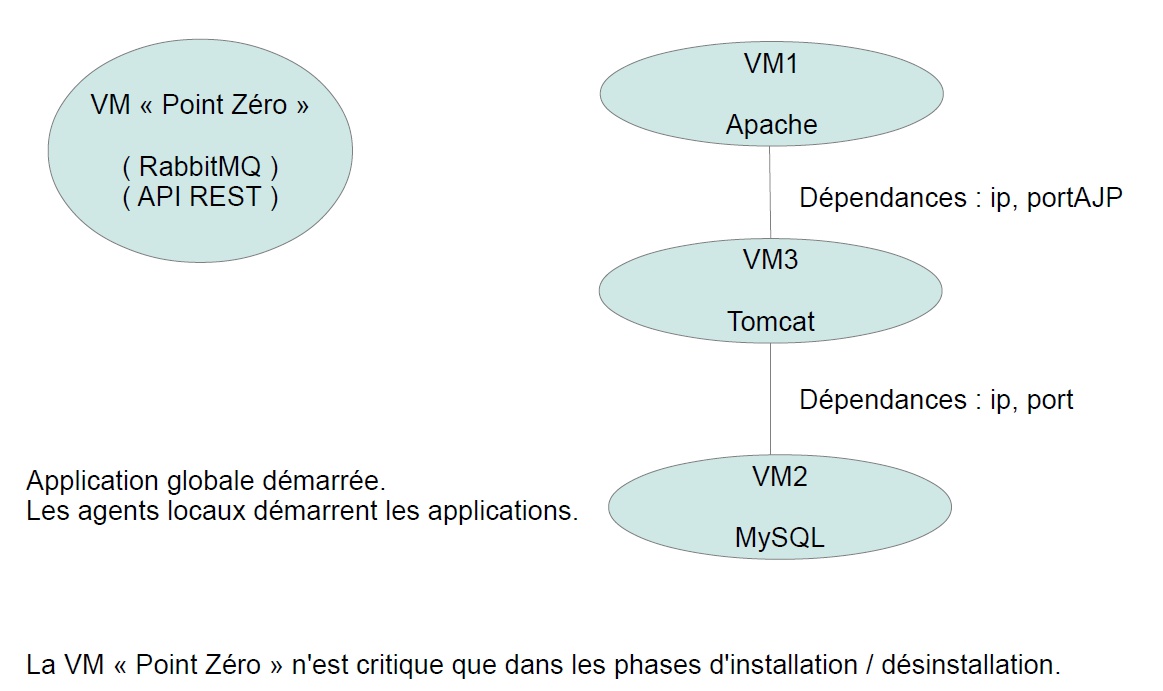
How it works: reconfiguration
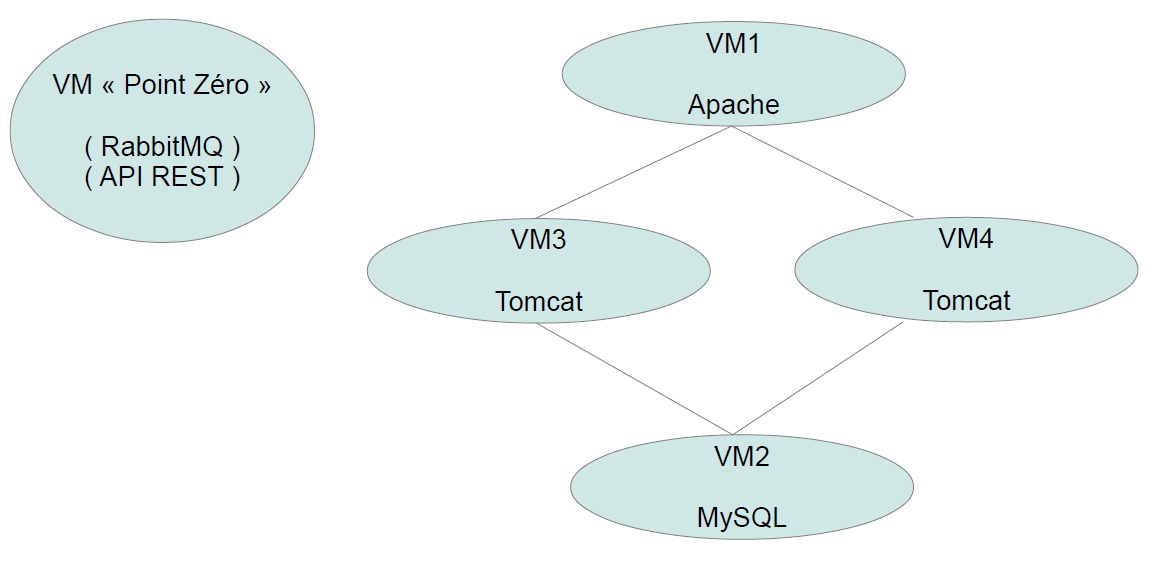
Deployment Graph (LAMP)
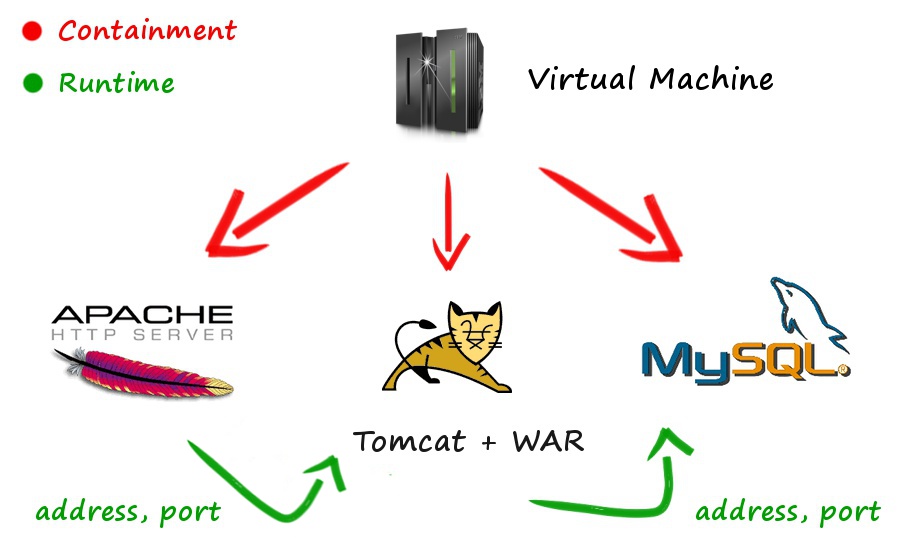
Tomcat contains all the WAR to run. Fine for legacy.
Runtime Graph (LAMP)
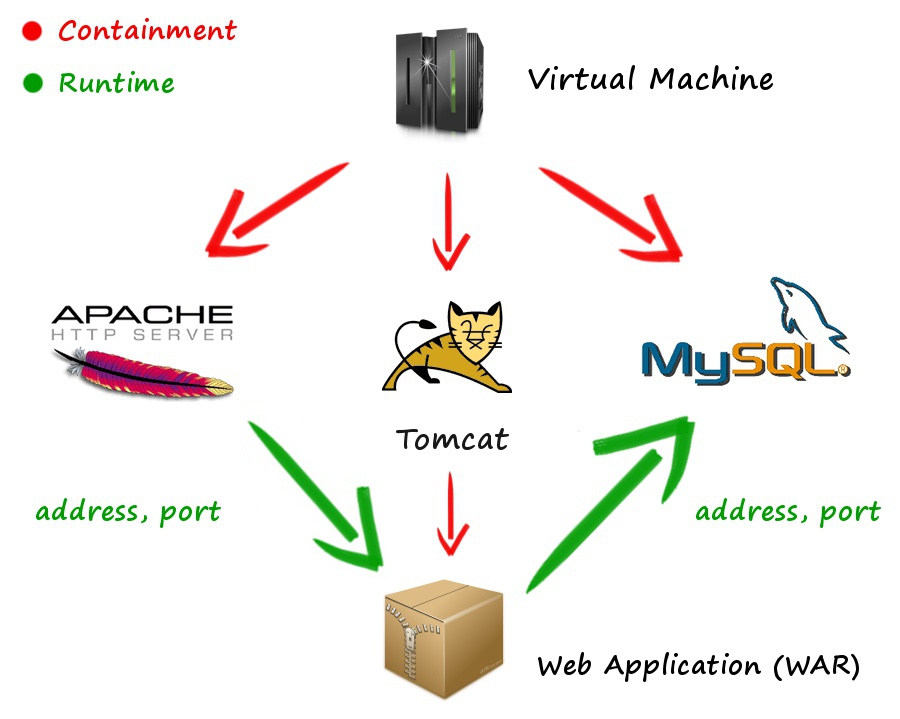
Model Principles
-
Configuration Files
- Describe Software components and their relations (graph)
- Define initial instances / deployment
-
API
- Load, validate and manipulate a model (graph or instances)
- To be used in platform and tools
The (oriented) Graph
The graph defines relations between Software components.
Two kinds of relations are considered.
Containment
A component has to be deployed onto another one.
Example: a war onto a web application server.
Runtime
A component needs another one to run.
A component provides a feature another component may need.
Example: a war depends on a MySQL database.
Roboconf's Model
Roboconf's model is made up of 3 elements:
- The graph definition.
- Resources that will be used by Roboconf to perform the creation of instances. This goes with the graph.
- The definition of an application (instance).
Graph node => Associated plugin.
Instances

- Instances 1: a VM with Apache and MySQL
- Instances 2: a VM with Apache Tomcat and the WAR
Tools for Roboconf

The model is a central project for all these tools.
Monitoring features and the semi-autonomous administration agent
will come later.
Ongoing Work
Runtime
- New configuration files <=> New Model
- Upgrade the REST API
- 2 Web Applications
- Create a Maven plug-in (validation, packaging)
Demo & Publication
- http://roboconf.net
- Migrate existing examples
- Code Quality & Code moved to GitHub
Questions?
(ask Vincent for better answers ;))